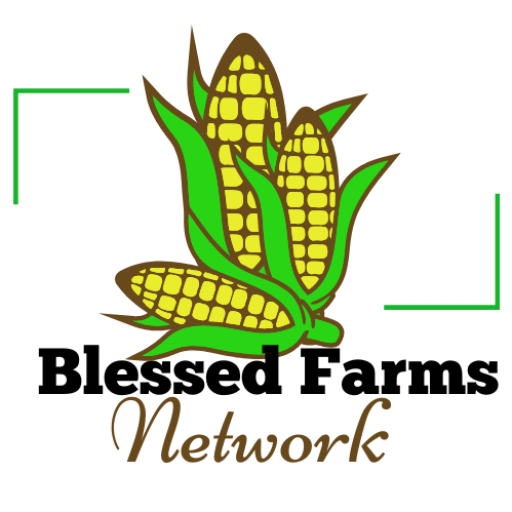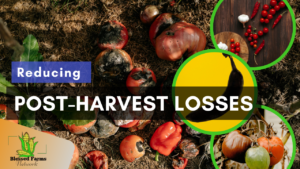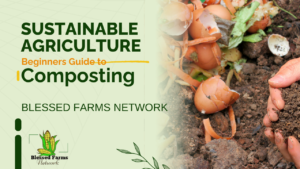Introduction
Black Soldier Fly Farming in Kenya is not very popular but awareness is slowly growing. For many years, poultry farming has been a common practice in many Kenyan households, typically done on a small scale and mainly for home consumption. In recent years, however, this has changed, with more farmers choosing to make poultry farming an economic venture. Poultry farming is considered a business that doesn’t require a high initial investment and can sustain itself after a while. Additionally, there is increased demand for poultry products like eggs and meat. As a result, more farmers have entered the business.
While poultry farming is a good business, over time, the production costs have risen considerably, especially due to the ever-increasing cost of feed. Did you know that over 70% of the cost of poultry farming goes towards feeding? Checking with different poultry feed producers, the cost of a 50kg bag exceeds Ksh. 3,000, putting immense pressure on farmers as this greatly reduces their profit margins. Moreover, the number of feed producers has increased, and due to the lack of standardized systems, many companies are producing substandard feeds, further increasing the costs farmers incur.
These issues could push farmers to either quit the business or seek alternatives, and this is where the Black Soldier Fly farming in Kenya (BSF) comes into play.
The Black Soldier Fly (BSF) is an insect that can be domesticated, with its larvae used as an alternative source of feed for poultry and livestock. The larvae are rich in protein and provide an excellent alternative to traditional feeds produced by feed companies. Additionally, BSF addresses environmental concerns by converting organic waste into valuable resources called frass, which is used in organic farming.
Let’s dive deeper into how Black Soldier Fly farming in Kenya is transforming agriculture in Kenya and why every farmer should consider it.
What is Black Soldier Fly Farming in Kenya?
At first glance, Black Soldier Flies (BSF) might seem like just another insect. Black soldier fly occurs naturally in the environment, and their larvae and maggot can be found in waste dumping sites, and naturally around cattle, pigs, and poultry manure piles as they feed on organic waste.
But don’t be fooled by appearances—these flies, particularly their larvae, are nutritional powerhouses. Black Soldier Fly farming in Kenya revolves around rearing these flies to harvest their larvae, which are then used as a high-protein feed for poultry, fish, and even pigs.

The lifecycle of the BSF is fascinating. The adult flies live for just a week, focusing solely on reproduction. The real magic happens when the eggs hatch into larvae. These larvae are incredibly efficient at breaking down organic waste, converting it into protein-rich biomass in just two weeks. Afterward, the larvae can be harvested, dried, and processed into feed for livestock.
The beauty of Black Soldier Fly farming in Kenya lies in its simplicity and effectiveness. In contrast to traditional farming methods, which rely heavily on expensive soy and fishmeal, BSF larvae offer a cost-effective and environmentally friendly alternative. And it’s not just about feed. The frass (insect manure) left behind after the larvae feed can be used as an organic fertilizer, further adding value to this process.
The Benefits of Black Soldier Fly Farming in Kenya
Sustainability
Black Soldier Fly farming in Kenya is a perfect example of a sustainable, cyclic farming system. The larvae feed on organic waste from the home, including fruit and vegetable scraps, rotten meat, and even manure from your chicken coop. They consume this waste and convert it into frass, which can be composted and used as organic fertilizer for the farm. By feeding the BSF larvae waste, you promote waste management while also supporting organic farming.
Cost Efficiency
Imagine being able to produce your own high-protein feed right on your farm! The utilization of BSF larvae as an alternative feed for poultry farming is estimated to decrease feeding costs by up to 50%. Additionally, the initial cost of Black Soldier Fly farming in Kenya is relatively low, as it is a one-time investment since the larvae are self-renewing. The only additional cost may arise if a farmer wishes to increase their colony.
Nutritional Benefits
BSF larvae are packed with protein—up to 40% of their dry weight is protein, making them an ideal supplement for livestock. According to scientific research on the nutritional composition of black soldier fly (BSF) larvae, their dry weight consists of 50% crude protein (CP), and up to 35% lipids, and a rich amino acid profile. This is relatively higher than the composition found in fishmeal and soybeans, which are currently used as protein sources in poultry feed. Poultry, in particular, benefits from this high-protein feed, leading to better growth rates, healthier birds, and higher egg production. Whether you’re a small-scale or commercial farmer, BSF feed can revolutionize your output.
Environmental Impact
As mentioned, BSF larvae are experts at breaking down organic waste. This reduces the strain on landfills and minimizes methane emissions from decomposing waste. Additionally, BSF farming requires significantly less land and water compared to conventional feed production systems. You’re not just feeding your livestock; you’re helping save the planet.
The Process of Black Soldier Fly Farming in Kenya
So, how do you get started with BSF farming in Kenya? The process is straightforward but requires attention to detail.
- Larval Acquisition: First, you need BSF larvae, which can be sourced from local BSF farms or suppliers. Based on your needs, you can buy Black Soldier fly eggs, and hatch them for yourself. Alternatively, you can buy already hatched larvae at the different stages.
- Setting up Infrastructure: You don’t need a large space. A small backyard setup can work. The key is maintaining the right conditions for the larvae to thrive—temperature (ideally between 24-30°C) and humidity levels are crucial.
- Feeding the Larvae: Once you have your setup, feed the larvae with organic waste. This could include kitchen scraps, animal manure, or agricultural waste. The larvae will grow rapidly, consuming twice their weight in organic matter each day.
- Harvesting the Larvae: After about two weeks, the larvae are ready to be harvested. You can either dry them for later use or feed them directly to your poultry or fish.
- Processing: The dried larvae can be ground into a protein-rich meal, while the leftover frass can be used as organic fertilizer.
Black Soldier Fly Production Process
Breeding and Egg-Laying
The process of mating and egg-laying occurs in the love cage . Inside the love cage, there should be an eggie (a medium where egg laying occurs) placed near an attractant (a decomposing matter producing a pungent smell that attracts female BSF to lay eggs). The eggies should be collected from the love cage every 2-3 days to ensure the eggs do not hatch in the love cage. The eggs should then be collected and placed in hatching containers. It is essential to ensure that the food source at this stage is of high quality.
Larvae Rearing
The eggs hatch and produce larvae, which are raised in a controlled environment with adequate food, moisture, and temperature to support growth and development.
The BSF Life Cycle
The black soldier fly goes from egg to adult in approximately 45 days when environmental conditions are optimal. It is necessary to understand the different life stages to ensure optimum production at the end of the cycle.
There are five major stages in the life cycle:
Egg → Larvae → Pre-pupae → Pupae → Adult

- Eggs: Adult females lay about 400-800 eggs. They choose locations away from predators and direct sunlight, seeking out crevices. They also prefer locations close to a food source, identified by its pungent smell. After laying eggs, the female adult dies. The eggs hatch after approximately 4 days.
- Larvae: The larvae go through six instars, with each stage showing an increase in size and weight. They also change color from cream to brown. This stage typically takes 13-18 days under optimal conditions. During this period, they are voracious feeders and consume waste rapidly. This is the only stage where they eat and store energy and fat for later stages.
- Pre-pupae: At this stage, they are dark brown in color. The larvae’s mouthparts are replaced with hooks, allowing them to move from the wet waste matter to a drier, shaded environment for pupation, where they will transform into flies.
- Pupae: They become immobile and stiff, and within 8-10 days, they transform into adults.
- Adult: There are both male and female flies. They look similar, but upon closer analysis, the females are usually larger than the males. Their sole purpose is to mate and lay eggs to continue the colony. Their mouthparts turn into sponging mouthparts, and they only consume liquids, not solid food. They require abundant natural light and warm temperatures (25-32°C). Mating occurs during the morning hours while in flight, and the female finds an appropriate place to lay eggs, dying soon after.
Waste Management
To ensure optimal production, it is essential to use high-quality waste. This process begins with the pre-processing stage, where:
- Any inorganic or hazardous materials are removed from the waste.
- Any large particles are ground to reduce their size and facilitate faster consumption. The mouthparts of black soldier flies are not developed enough to break down large particles, so a hammer or mill can be used for grinding.
- Water content should also be managed, either by adding dry material to reduce moisture or by adding water to increase it. The water content should be maintained between 65-75%.
- Different types of organic material should be blended to ensure the best nutritional value for the black soldier flies (BSF).
Harvesting
The larvae are harvested in the 5th instar, at which point they are beige in color, just before turning black. They are harvested by sieving, sifting, or using automated devices for larger farms.
Processing
For poultry feed, the larvae can be fed to poultry while still alive. If there is a large quantity, they can be further processed by cleaning, drying, and grinding them for storage.
Conclusion
Black Soldier Fly farming in Kenya is more than just a sustainable solution for animal feed. It’s a way to address Kenya’s food security challenges, manage organic waste, and protect the environment. As the country moves toward more sustainable agricultural practices, BSF farming is set to play a significant role in shaping the future of livestock and poultry production. The time to act is now! Whether you’re a farmer, entrepreneur, or policymaker, the potential of BSF farming is immense—let’s harness its power to build a more sustainable and profitable agricultural sector.





